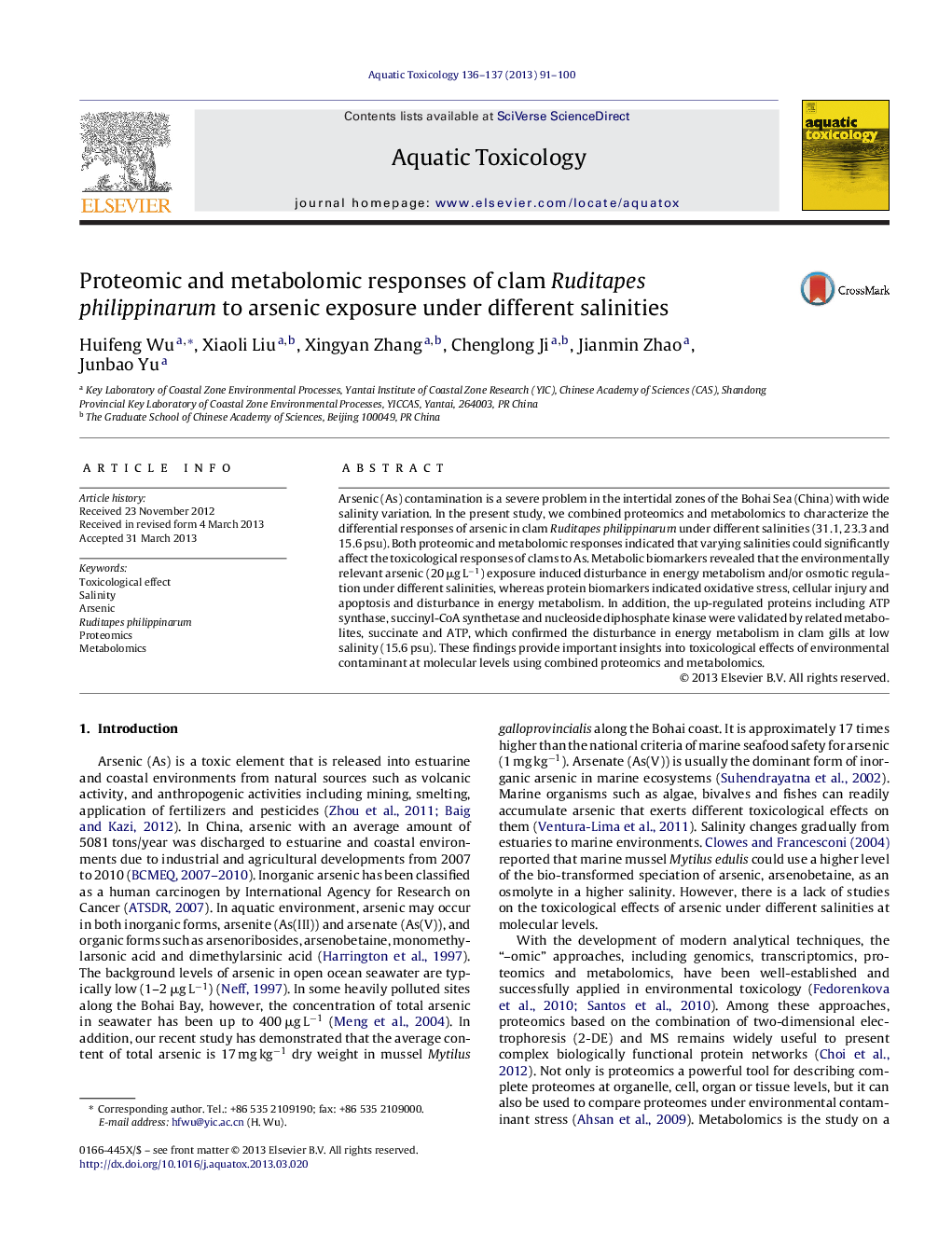| Article ID | Journal | Published Year | Pages | File Type |
|---|---|---|---|---|
| 4529474 | Aquatic Toxicology | 2013 | 10 Pages |
•Arsenic(V) induced disturbance in energy metabolism and osmotic regulation clams.•Salinity could apparently influence the toxicological effects of As in clam gills.•A combined-omic approach could better the understanding of toxicological effects.
Arsenic (As) contamination is a severe problem in the intertidal zones of the Bohai Sea (China) with wide salinity variation. In the present study, we combined proteomics and metabolomics to characterize the differential responses of arsenic in clam Ruditapes philippinarum under different salinities (31.1, 23.3 and 15.6 psu). Both proteomic and metabolomic responses indicated that varying salinities could significantly affect the toxicological responses of clams to As. Metabolic biomarkers revealed that the environmentally relevant arsenic (20 μg L−1) exposure induced disturbance in energy metabolism and/or osmotic regulation under different salinities, whereas protein biomarkers indicated oxidative stress, cellular injury and apoptosis and disturbance in energy metabolism. In addition, the up-regulated proteins including ATP synthase, succinyl-CoA synthetase and nucleoside diphosphate kinase were validated by related metabolites, succinate and ATP, which confirmed the disturbance in energy metabolism in clam gills at low salinity (15.6 psu). These findings provide important insights into toxicological effects of environmental contaminant at molecular levels using combined proteomics and metabolomics.
